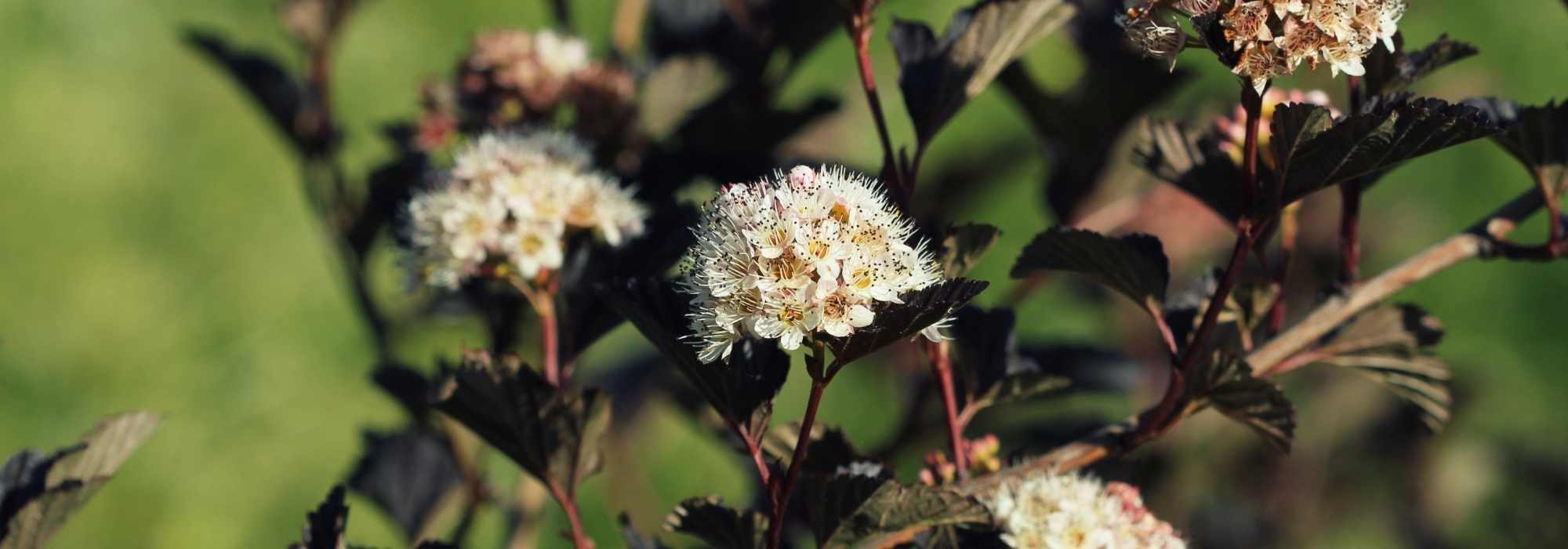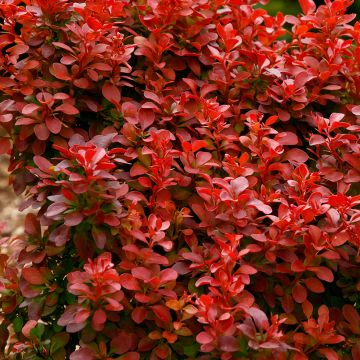

Physocarpus opulifolius Tiny Wine - Ninebark


Physocarpus opulifolius Tiny Wine - Ninebark


Physocarpus opulifolius Tiny Wine - Ninebark
Physocarpus opulifolius Tiny Wine - Ninebark
Physocarpus opulifolius 'Smpotw' TINY WINE®
Ninebark, Eastern ninebark
Special offer!
Receive a €20 voucher for any order over €90 (excluding delivery costs, credit notes, and plastic-free options)!
1- Add your favorite plants to your cart.
2- Once you have reached €90, confirm your order (you can even choose the delivery date!).
3- As soon as your order is shipped, you will receive an email containing your voucher code, valid for 3 months (90 days).
Your voucher is unique and can only be used once, for any order with a minimum value of €20, excluding delivery costs.
Can be combined with other current offers, non-divisible and non-refundable.
Home or relay delivery (depending on size and destination)
Schedule delivery date,
and select date in basket
This plant carries a 24 months recovery warranty
More information
We guarantee the quality of our plants for a full growing cycle, and will replace at our expense any plant that fails to recover under normal climatic and planting conditions.
Would this plant suit my garden?
Set up your Plantfit profile →
Description
The Physocarpus opulifolius 'Tiny Wine' is a variety of Physocarpus, also known as Ninebark, that is attractive both for its foliage and its flowering. Its beautiful toothed leaves have a dark purple colour that catches the eye and perfectly highlights the clusters of white-pink flowers that bloom in spring. This small shrub is so compact that it can be easily grown in a pot on a terrace. When incorporated into a diverse flowerbed, it also creates strong colour contrasts. An easy-to-grow plant, ideal for small gardens.
Physocarpus is one of the members of the large Rosaceae family (about 5000 species) which includes many decorative genera, such as Photinias, Flowering Cherry and Apple trees, and of course, roses (Rosa, hence the name of the family). Physocarpus consists of about a dozen species, the most common in our gardens being P. opulifolius, commonly known as Ninebark. The botanical species is native to the eastern United States, from Quebec to Virginia. Mature specimens have a brownish-brown bark that peels off and becomes decorative in winter when it is no longer hidden by the abundant foliage.
There are many cultivars of Physocarpus opulifolius, often with colourful foliage, including shades of purple. The Physocarpus 'Tiny Wine' is the result of the selection work carried out by Timothy D. Wood from Spring Meadow Nursery in Michigan, USA. Similar to the well-known variety 'Diabolo', 'Tiny Wine' stands out for its more compact habit, forming at maturity an erect clump of only 1.20 m in height and 1 m in width. The shrub forms a dense network of slender, upright stems, whose mahogany brown tips harmonise perfectly with the bronze-purple colour of the foliage. The small trilobed leaves measure from 3 to 8 cm and are toothed, with well-marked veins and a slightly glossy surface that is very attractive. This dark vegetation forms a perfect setting to showcase the spring flowering. In May and June, flat corymbs of small white-pink flowers bloom. Nectar-rich, the flowers attract pollinators such as bees, adding an extra dimension to the interest of this shrub. They then develop into small red fruits in autumn, which are appreciated by birds. The foliage retains its dark colour throughout the growing season, before turning to red or reddish-brown in autumn, and then falling to the ground.
This graceful 'Tiny Wine' Ninebark will find its place in multiple situations, whether in a low mixed hedge, as a decorative pot, or at the front of a shrub border. Take advantage of its distinctive colour to create lively scenes by combining it with other colourful foliage. Dare to go for the classic, yet always effective combination with golden shrubs, such as Cotinus coggygria 'Golden Lady'. Another wise choice would be the Euonymus japonicus 'White Spire', which allows you to enjoy not only a contrast of colours but also a contrast of shapes. This small Spindle Tree has a distinctly vertical silhouette and is adorned with green foliage heavily edged in white, which is particularly bright. As this shrub is evergreen, you will also enjoy it throughout the winter. Another variegated shrub that would be interesting, this time in the background, as it exceeds 2 m in height, is the Viburnum tinus 'Variegatum' with its beautiful green foliage edged in creamy yellow. This evergreen shrub also offers winter flowering, followed by decorative black fruits.
Physocarpus opulifolius Tiny Wine - Ninebark in pictures


Plant habit
Flowering
Foliage
Botanical data
Physocarpus
opulifolius
'Smpotw' TINY WINE®
Rosaceae
Ninebark, Eastern ninebark
Cultivar or hybrid
Planting and care
Plant Physocarpus opulifolius 'Tiny Wine' in deep, well-drained, humus-bearing, rich and preferably moist soil, preferably neutral to acidic. It fears excess limestone and overly dry and/or compacted soil. Avoid letting the soil dry out in summer and shower the foliage during heatwaves. This bush will thrive in partial shade or full sun, but the foliage colours will be more pronounced if planted in a sunny location. Thin out dense plants by severely pruning some of the arching branches after flowering. This can promote the emergence of new flower buds in late summer. Physocarpus tends to produce many suckers, to the detriment of the main plant; it may be useful to rejuvenate it (cutting all the branches near the ground in spring) to give it a denser appearance.
Planting period
Intended location
Care
Planting & care advice
This item has not been reviewed yet - be the first to leave a review about it.
Similar products
Haven't found what you were looking for?
Hardiness is the lowest winter temperature a plant can endure without suffering serious damage or even dying. However, hardiness is affected by location (a sheltered area, such as a patio), protection (winter cover) and soil type (hardiness is improved by well-drained soil).

Photo Sharing Terms & Conditions
In order to encourage gardeners to interact and share their experiences, Promesse de fleurs offers various media enabling content to be uploaded onto its Site - in particular via the ‘Photo sharing’ module.
The User agrees to refrain from:
- Posting any content that is illegal, prejudicial, insulting, racist, inciteful to hatred, revisionist, contrary to public decency, that infringes on privacy or on the privacy rights of third parties, in particular the publicity rights of persons and goods, intellectual property rights, or the right to privacy.
- Submitting content on behalf of a third party;
- Impersonate the identity of a third party and/or publish any personal information about a third party;
In general, the User undertakes to refrain from any unethical behaviour.
All Content (in particular text, comments, files, images, photos, videos, creative works, etc.), which may be subject to property or intellectual property rights, image or other private rights, shall remain the property of the User, subject to the limited rights granted by the terms of the licence granted by Promesse de fleurs as stated below. Users are at liberty to publish or not to publish such Content on the Site, notably via the ‘Photo Sharing’ facility, and accept that this Content shall be made public and freely accessible, notably on the Internet.
Users further acknowledge, undertake to have ,and guarantee that they hold all necessary rights and permissions to publish such material on the Site, in particular with regard to the legislation in force pertaining to any privacy, property, intellectual property, image, or contractual rights, or rights of any other nature. By publishing such Content on the Site, Users acknowledge accepting full liability as publishers of the Content within the meaning of the law, and grant Promesse de fleurs, free of charge, an inclusive, worldwide licence for the said Content for the entire duration of its publication, including all reproduction, representation, up/downloading, displaying, performing, transmission, and storage rights.
Users also grant permission for their name to be linked to the Content and accept that this link may not always be made available.
By engaging in posting material, Users consent to their Content becoming automatically accessible on the Internet, in particular on other sites and/or blogs and/or web pages of the Promesse de fleurs site, including in particular social pages and the Promesse de fleurs catalogue.
Users may secure the removal of entrusted content free of charge by issuing a simple request via our contact form.
The flowering period indicated on our website applies to countries and regions located in USDA zone 8 (France, the United Kingdom, Ireland, the Netherlands, etc.)
It will vary according to where you live:
- In zones 9 to 10 (Italy, Spain, Greece, etc.), flowering will occur about 2 to 4 weeks earlier.
- In zones 6 to 7 (Germany, Poland, Slovenia, and lower mountainous regions), flowering will be delayed by 2 to 3 weeks.
- In zone 5 (Central Europe, Scandinavia), blooming will be delayed by 3 to 5 weeks.
In temperate climates, pruning of spring-flowering shrubs (forsythia, spireas, etc.) should be done just after flowering.
Pruning of summer-flowering shrubs (Indian Lilac, Perovskia, etc.) can be done in winter or spring.
In cold regions as well as with frost-sensitive plants, avoid pruning too early when severe frosts may still occur.
The planting period indicated on our website applies to countries and regions located in USDA zone 8 (France, United Kingdom, Ireland, Netherlands).
It will vary according to where you live:
- In Mediterranean zones (Marseille, Madrid, Milan, etc.), autumn and winter are the best planting periods.
- In continental zones (Strasbourg, Munich, Vienna, etc.), delay planting by 2 to 3 weeks in spring and bring it forward by 2 to 4 weeks in autumn.
- In mountainous regions (the Alps, Pyrenees, Carpathians, etc.), it is best to plant in late spring (May-June) or late summer (August-September).
The harvesting period indicated on our website applies to countries and regions in USDA zone 8 (France, England, Ireland, the Netherlands).
In colder areas (Scandinavia, Poland, Austria...) fruit and vegetable harvests are likely to be delayed by 3-4 weeks.
In warmer areas (Italy, Spain, Greece, etc.), harvesting will probably take place earlier, depending on weather conditions.
The sowing periods indicated on our website apply to countries and regions within USDA Zone 8 (France, UK, Ireland, Netherlands).
In colder areas (Scandinavia, Poland, Austria...), delay any outdoor sowing by 3-4 weeks, or sow under glass.
In warmer climes (Italy, Spain, Greece, etc.), bring outdoor sowing forward by a few weeks.

















































